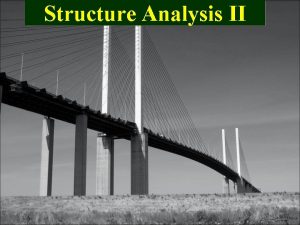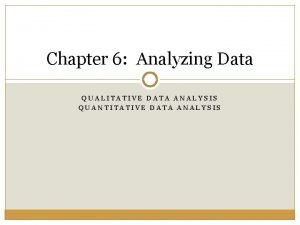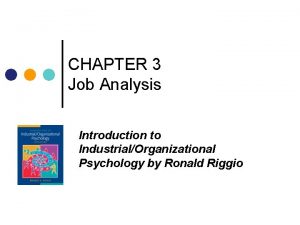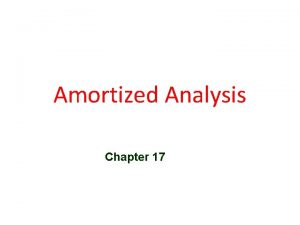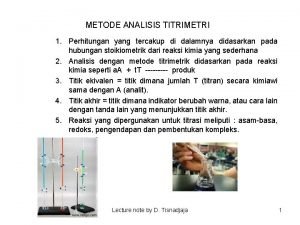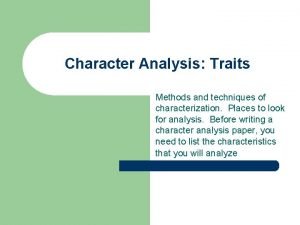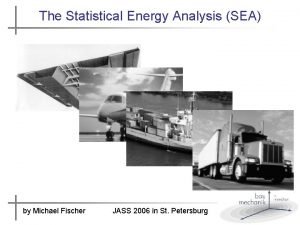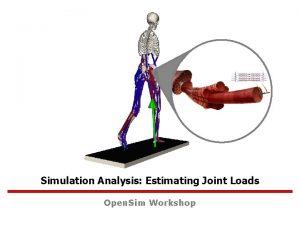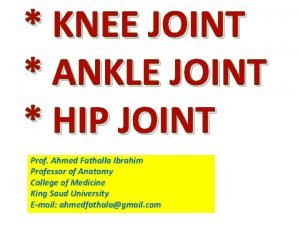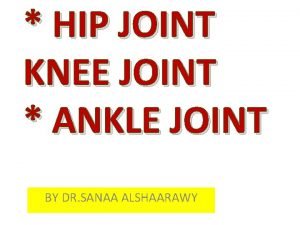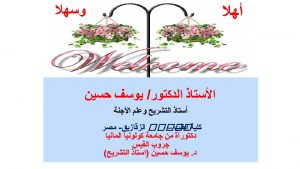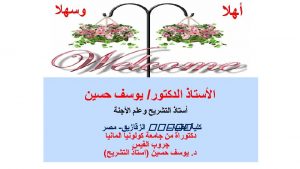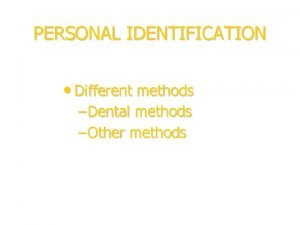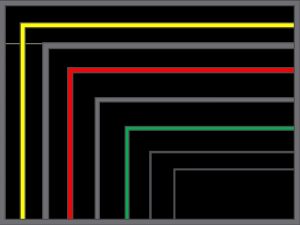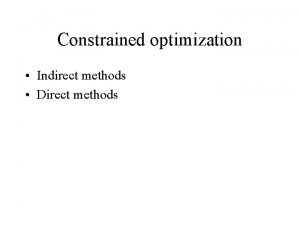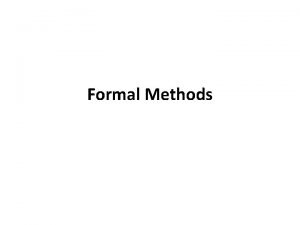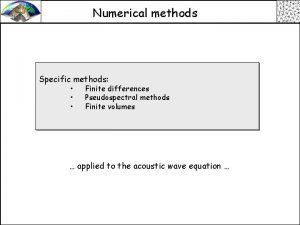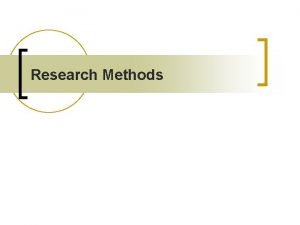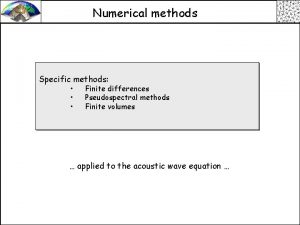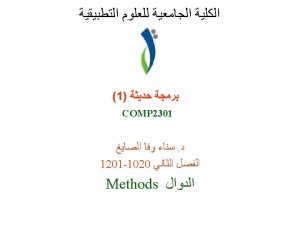Analysis of trussMethod of Joint Methods of Analysis
























- Slides: 24

Analysis of truss-Method of Joint

Methods of Analysis Method of Joints The method of joints utilizes the force equations of equilibrium for each joint. Analysis normally begins at a joint where at least one force is known and not more than two forces are unknown for plane trusses (or not more than three forces are unknown for space trusses) Method of Sections The method of section has the basic advantage that the force in almost any desired member may be found directly from an analysis of a section which has cut the member. In choosing a section of the truss, in general, not more than three members whose forces are unknown may be cut, since there are only three available equilibrium equations which are independent. 2

Problem -1 Compute the forces in all the members of the truss, shown here, using the method of joints. 3

Support Reactions 4

Calculation of the Member forces Note: For convenience, assume tension in all the members. Remember! A member in compression “pushes” on the joint and a member in tension “pulls” on the joint. 5

Calculation of the Member forces Member Forces Joint A 6

Calculation of the Member forces Member Forces Joint B 7

Calculation of the Member forces Member Forces Joint C 8

Member forces Member L (m) Forces (k. N) Nature AB 2. 4 2. 0 Tension BC 1. 8 0. 0 - CD 2. 4 2. 0 Tension DA 1. 8 1. 5 Tension BD 3. 0 -2. 5 Compression 9

Example 1: Method of Joints – Plane Truss 6 - 10

ENGINEERING MECHANICS : STATICS Example 1 (continued): Alternatively, ∑Fx=0 and ∑Fy=0 will give the same results 6 - 11

ENGINEERING MECHANICS : STATICS Example 1 (continued): 6 - 12

Example 1 (continued): 6 - 13

Zero Force Members Case 1: If only two non-collinear members form a truss joint and no external load or support reaction is acting at the joint, the members must be zero force members. BC and CD are zero force members. WHY ? ? ? 2/28/2021 14

Zero Force Members (Contd. ) Case 2: If there is an external load at the joint, where two members are meeting, and it is acting in the direction of one of the members, another member will be a zero force member. BC is a zero force members. WHY ? ? ? 2/28/2021 15

Zero Force Members (Contd. ) Case 3: If three members form a truss joint for which two of the members are collinear, the third member is a zero force member provided no external force or support reaction is acting at the joint. EF is a zero force member. WHY ? ? ? 2/28/2021 16

ENGINEERING MECHANICS : STATICS Zero-Force Members ! Zero-force members are used to increase the stability and rigidity of the truss and to provide support for various loading conditions as well as to support the weight of the truss and to maintain the truss in the desired shape. Although they carry no load, they prevent structural collapse. 6 - 17

Problem-2 Identify zero force members in a truss shown. Answer: BH and DF are zero force members. 2/28/2021 18

Problem-3 For the truss shown in the Figure, identify all correct zero-force members. J 60 k. N I H G F 5 m A C D E B 5 m 2/28/2021 5 m 40 k. N 5 m 5 m 19

Solution 60 k. N J I H G F 5 m A C D E B 5 m 5 m 40 k. N 5 m 5 m AB and AJ are zero-force members. JB, JI and IH are also zero-force members. CH is a zero-force member GD is a zero-force member ED is a zero-force member 2/28/2021 20

Example 2: Zero-Force Members For the given loading, determine the zero-force members in the truss shown. 6 - 21

Example 3: Zero-Force Members For the given loading, determine the zero-force members in the truss shown. 6 - 22

Example 4: Zero-Force Members For the given loading, determine the zero-force members in the truss shown. 6 - 23

Example 5: Zero-Force Members For the given loading, determine the zero-force members in the truss shown. 6 - 24
 Direct wax pattern
Direct wax pattern Break joint lamb
Break joint lamb Membrana tectoria
Membrana tectoria Permanent joint
Permanent joint Memorandum joint venture account format
Memorandum joint venture account format Lamb grading chart
Lamb grading chart Fibrous joints
Fibrous joints Fact finding techniques in system analysis and design
Fact finding techniques in system analysis and design Virtual work method truss
Virtual work method truss Feedback analysis methods
Feedback analysis methods Data in legal research
Data in legal research Data analysis methods
Data analysis methods Job analysis introduction
Job analysis introduction Difference between colloidal and crystalline precipitate
Difference between colloidal and crystalline precipitate Method
Method Accounting method amortized analysis
Accounting method amortized analysis Input and output design in system analysis and design
Input and output design in system analysis and design Advantage of vender rating
Advantage of vender rating Apa yang dimaksud analisis titrimetri
Apa yang dimaksud analisis titrimetri Techniques of characterization
Techniques of characterization Factors to consider in evaluating retail trading area
Factors to consider in evaluating retail trading area Methods of vibration analysis
Methods of vibration analysis Research methods design and analysis
Research methods design and analysis Opensim static optimization
Opensim static optimization Joint warfare analysis center
Joint warfare analysis center








